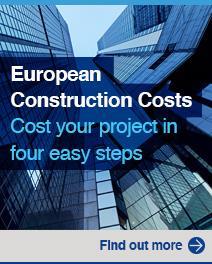Whole life costs are increasingly important drivers for clients expecting maximum return on good design

Demand for high quality design remains paramount but the days of access to a bottomless pit of money have long gone. Funding is still difficult to secure and the viability of any scheme remains risky.
In the current climate, clients need to have the confidence to commit to a project and to help instil this much needed assurance, the design team needs to be able to demonstrate affordability and viability from the outset.
The Qatar 2022 World Cup design competition is a perfect example of this approach in action, where architects are being invited to submit not only design solutions, but also cost plans based on the design at the tender stage.
The importance of cost in design has achieved greater focus within the property and construction industry over the last decade.
Assessing the value of a design is no longer simply a question of understanding only capital costs - operational and lifecycle costs have come to the fore
There is now a drive to create efficient design solutions from a whole life perspective to deliver more economically viable buildings. This is combined with an increasing legislation on sustainability.
As a result, clients are now more open to considering a higher capital expenditure output at the start to provide lower operational costs and a commercially viable whole lifetime value.
Assessing the value of a design is no longer simply a question of understanding only capital costs. Operational and lifecycle costs have come to the fore creating a far stronger relationship between the cost consultant and architectural disciplines as a result.
The type of information included in the design proposal has also changed. Rider Levett Bucknall is frequently asked to clearly present a functional as well as an elemental cost analysis for potential schemes the world over. This dual approach not only enables a project to be benchmarked on a functional basis, i.e. cost/key, cost/bed but also allows the cost/m2 and the elemental costs to be benchmarked and interrogated . The design team can then understand more fully explain why costs deviate from the norm, for example, bad ground conditions, which could contribute to above average substructure costs.
The benefits of being able to respond to cost related questions creates greater confidence and instils a sense of trust into the relationship as well as ensuring that a financially more successful result is achieved. It also means that protracted redesigns, or later stage value engineering exercises, can be avoided and design team and client aspirations and outcomes remain aligned.
Lance Taylor is chief executive of Rider Levett Bucknall UK and director of the Rider Levett Bucknall global practice




























No comments yet